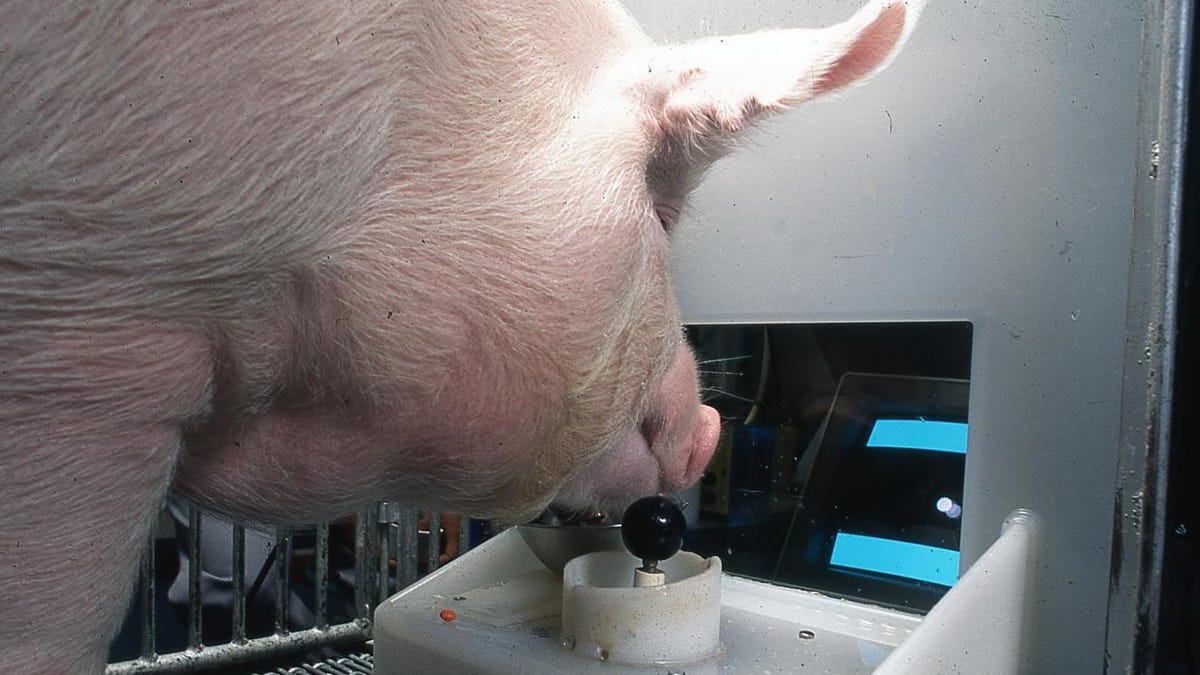Scientists teach pigs how to play a video game, and pigs are good at it
Hamlet, Omelette, Ebony and Ivory aren't rescuing Princess Peach just yet, but they did show a remarkable ability to learn and operate a game.
Yorkshire pigs Hamlet and Omelette and Panepinto micro pigs Ebony and Ivory are ambassadors for their species. The quartet was the focus of a study that tested whether they could learn to play a video game. Spoiler alert: They were pretty good at it.
Purdue animal behavior specialist Candace Croney and chimpanzee cognition expert Sarah Boysen co-authored a study on the pigs published in the journal Frontiers in Psychology on Thursday. The study chronicles an experiment to investigate the cognitive processes ("such as memory, attention, and conceptualization") of farm animals.
The experiment involved first teaching the pigs how to manipulate a joystick using their snouts. They were then taught to use the joystick to play a video game on a monitor in front of them. The pigs aren't rescuing Princess Peach just yet, but they did show a remarkable ability to learn and operate the game.
Micro pig ebony plays a video game.
"Each pig performed the tasks well above chance, indicating the animal understood that the movement of the joystick was connected to the cursor on the computer screen," Frontiers said in a statement.
The pigs were rewarded with food for playing the game properly, but they also responded to verbal encouragement.
Frontiers said the pigs "failed to meet the criteria used for primates to demonstrate full mastery of the concept," but the researchers suspect this may be connected to the way the experiment functions. It wasn't designed for far-sighted animals with limited dexterity. The scientists suggest a touchscreen might be an option to explore in the future.
The study was small and limited in scope, but it could have implications for scientists' understanding of pig intelligence and the animals' ability to learn. The researchers are interested in taking the study further to see if computers and symbols could be used for communication with pigs.
"It is no small feat for an animal to grasp the concept that the behavior they are performing is having an effect elsewhere," said Croney. "That pigs can do this to any degree should give us pause as to what else they are capable of learning and how such learning may impact them."


